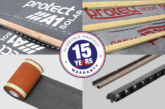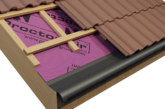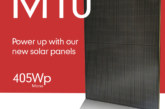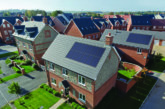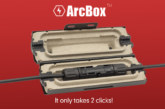
The new BS 8612 Dry-fixed ridge, hip and verge systems for slating and tiling will help both contractors and designers get it right, says Kevin Ley from Redland.
January saw the publication of a new British Standard that governs the selection, quality and testing of important dry-fixed roofing systems: BS 8612 Dry-fixed ridge, hip and verge systems for slating and tiling. This is a much-needed document. There is a plethora of dry-fixed roofing products on the market and a widespread misperception that these are commodity products with little variation between brands — apart from price. That just is not the case, as some find out to their cost.
Dry-fixed products must be compatible with the tiles or slates on the roof, they must be correctly fixed and they must be properly designed. Failure to select the right systems leads to roofs with problems: verges that are hanging from the edge of the roof; ridge tile and verges blown off by the wind; unsightly black staining down gable-end walls due to verges which do not shed rainwater properly etc.
From wet to dry
The switch from traditional wet fix to dry fix was driven by changes to NHBC guidance. In 2011, NHBC analysed its claims figures and discovered that 60% of them were related to roofs and of all roof-related claims, over half involved mortar.
This led to new NHBC guidance in 2012 which said that all bedded ridge and hip tiles had to be mechanically fixed; and then to the revised version of BS 5534 Slating and tiling for pitched roofs and vertical cladding – code of practice in 2014 which regularised these changes. As a result, many housing developers have migrated to dry-fix systems, as they are far faster to fit than double-fixed wet systems.
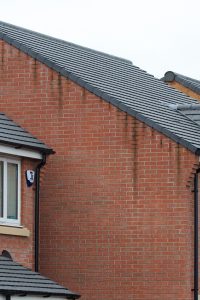
Clearly, as the number of dry-fixed roofs increases, so does the risk of problems related to dry-fixed systems. Sometimes these problems are caused by failures in the products and systems themselves. It could be that the fixing systems cannot withstand the wind loading, the adhesive on the ridge roll has not stuck adequately to the roof tiles, or the physical design of a verge causes water to run down the face of the wall.
In other situations, installers are to blame. For instance, we hear of the wrong type of fixings being used to fix a roof verge piece or in some cases, there are no fixings at all because the roofer has wrongly assumed they are not needed. This problem is often exacerbated by the product arriving without any fixing instructions.
Prior to BS 8612, the dry-fix ridge, hip and verge market has been largely unregulated other than via third party certification and so this is why the market has been crying out for the implementation of a British standard.
Getting it right
The new standard aims to ensure that none of the above problems occur. It talks about material properties, dimensional tolerance, required performance and how dry-fix systems should be tested to demonstrate that they conform and are fit for purpose.
One important new requirement is testing for resistance to wind uplift and horizontal forces. While BS 5534 currently says that dry-fix verges and ridges can be used if they can withstand wind uplift forces, it does not say how the products should be tested to verify this. The new BS 8612 defines tests to determine mechanical resistance to wind load and shows how specifiers should use data from these tests to verify whether a product is suitable or not, given the wind exposure of the location under consideration.
The standard also sets down a test for dry-fix ridge-roll products to measure whether they can meet the profile of the roof tile at ridges and hips without breaking or splitting. A third test checks whether roof verges shed the water away from the surface of the wall, to avoid staining and damp issues.
The type and quality of the material is also specified, with respect to durability. Plastics must withstand UV exposure without significantly changing appropriate mechanical properties within certain limits. Ridge-roll products must cope with freeze-thaw cycles and the impacts of heat and humidity.
Dry-fixed for the future
Given the fact that NHBC has been a driving force behind these changes we can expect it to mandate the use of dry-fixed systems that are compliant with BS 8612 in the near future. Over time, it is likely that all products will be updated so that they meet the standard.
In the meantime, specifiers must check that dry-fixed products meet the standard and that they are compliant with the slates or tiles on the roof. BS 8612 says that manufacturers must provide, if requested, a product declaration of performance, covering design resistance to wind-loading and states which tiles they can be used with. They must also issue instructions — which the contractor must follow.
It is important to get this right. Failures are costly and wasteful for housing providers and distressing for residents. Reputable manufacturers will be more than happy to provide technical information and advice around this subject to specifiers and installers.

